

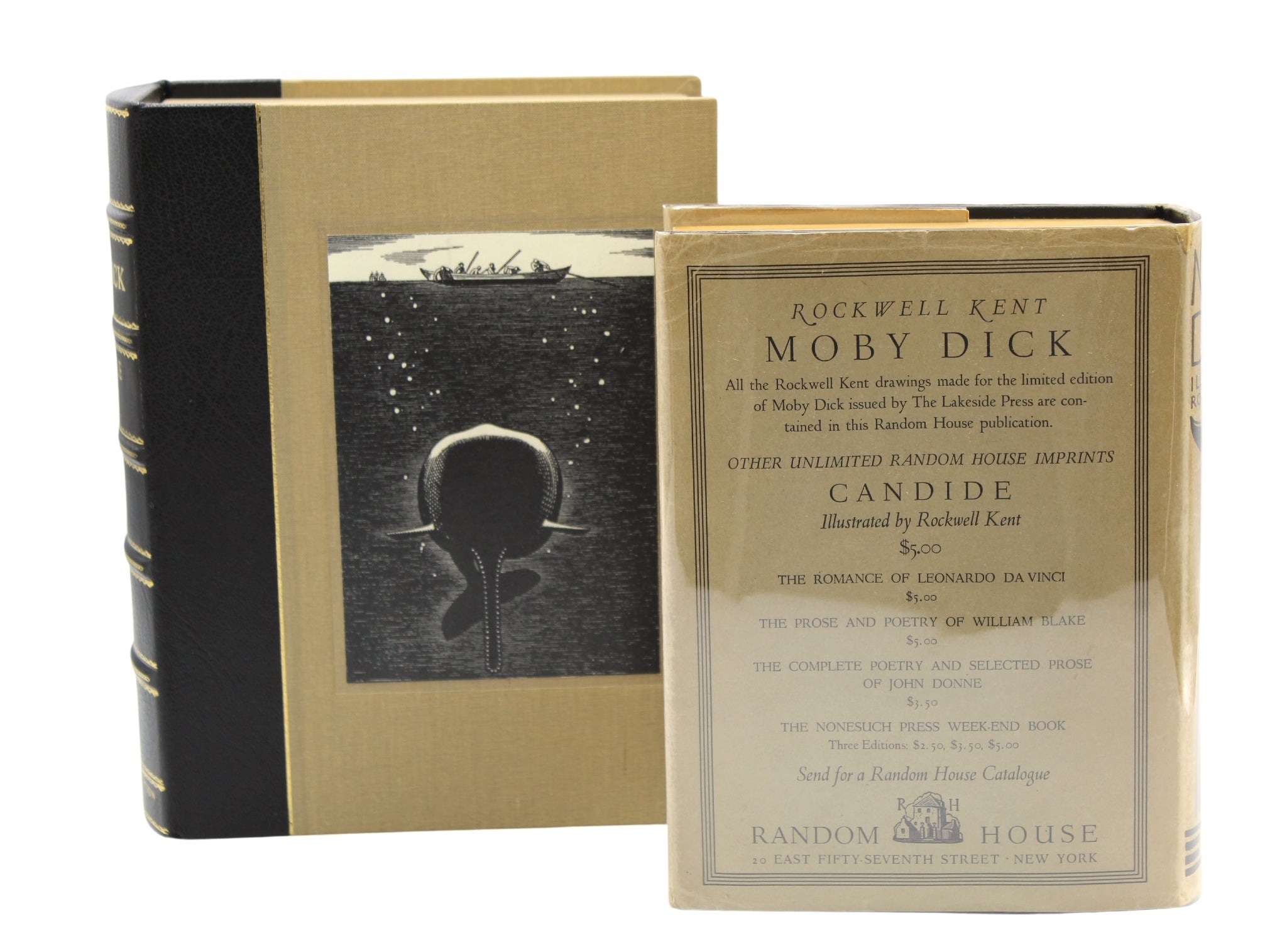



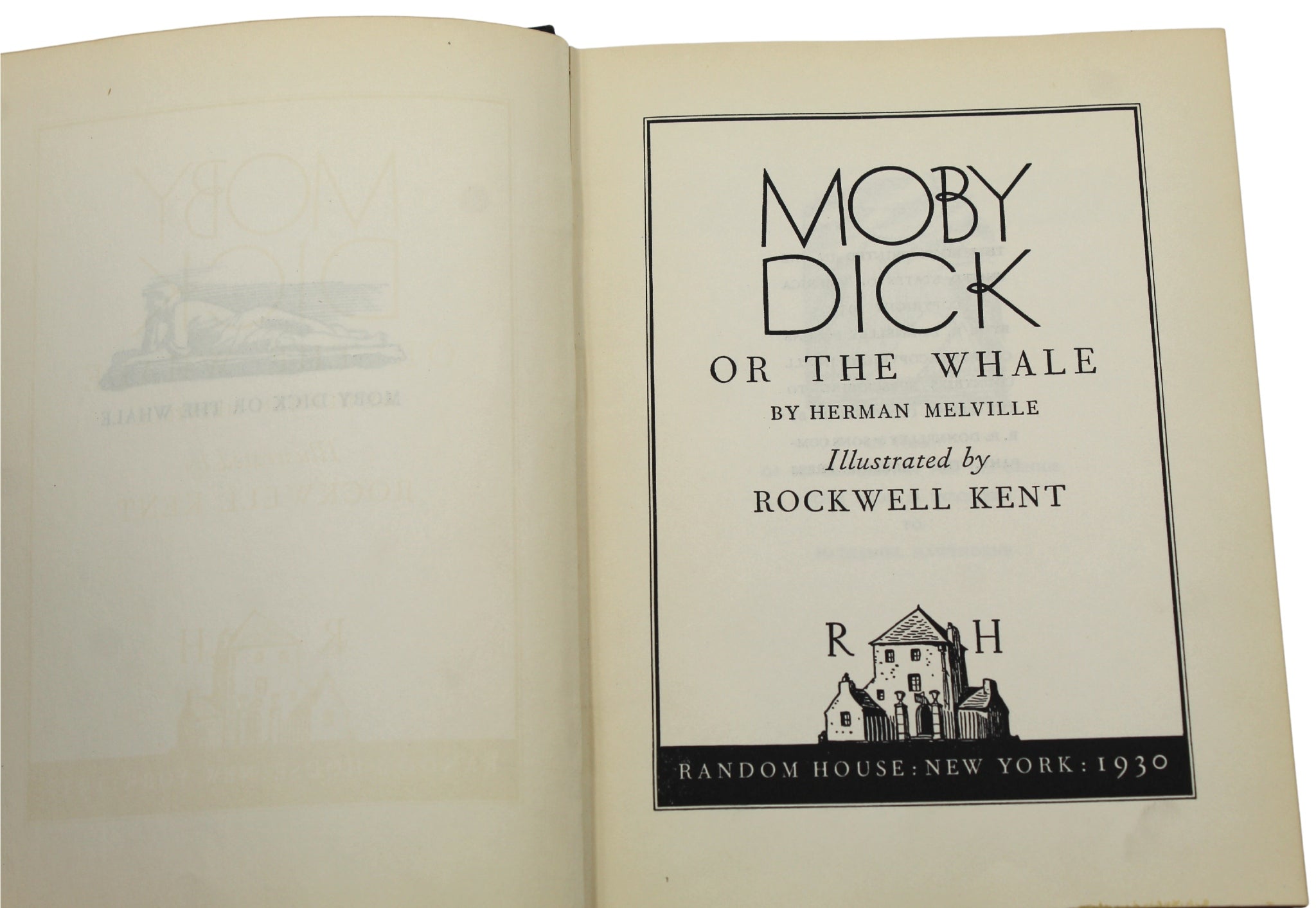




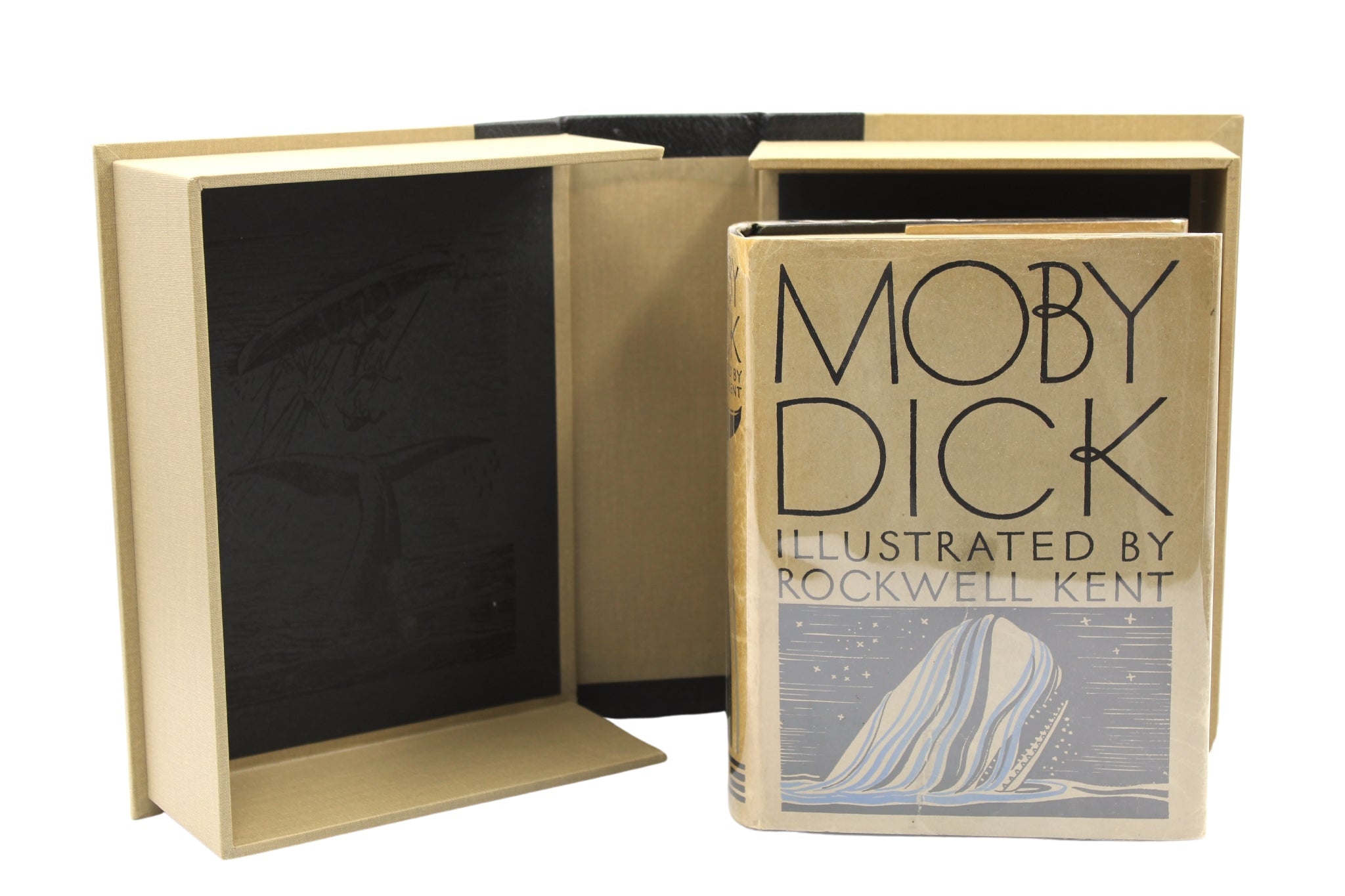

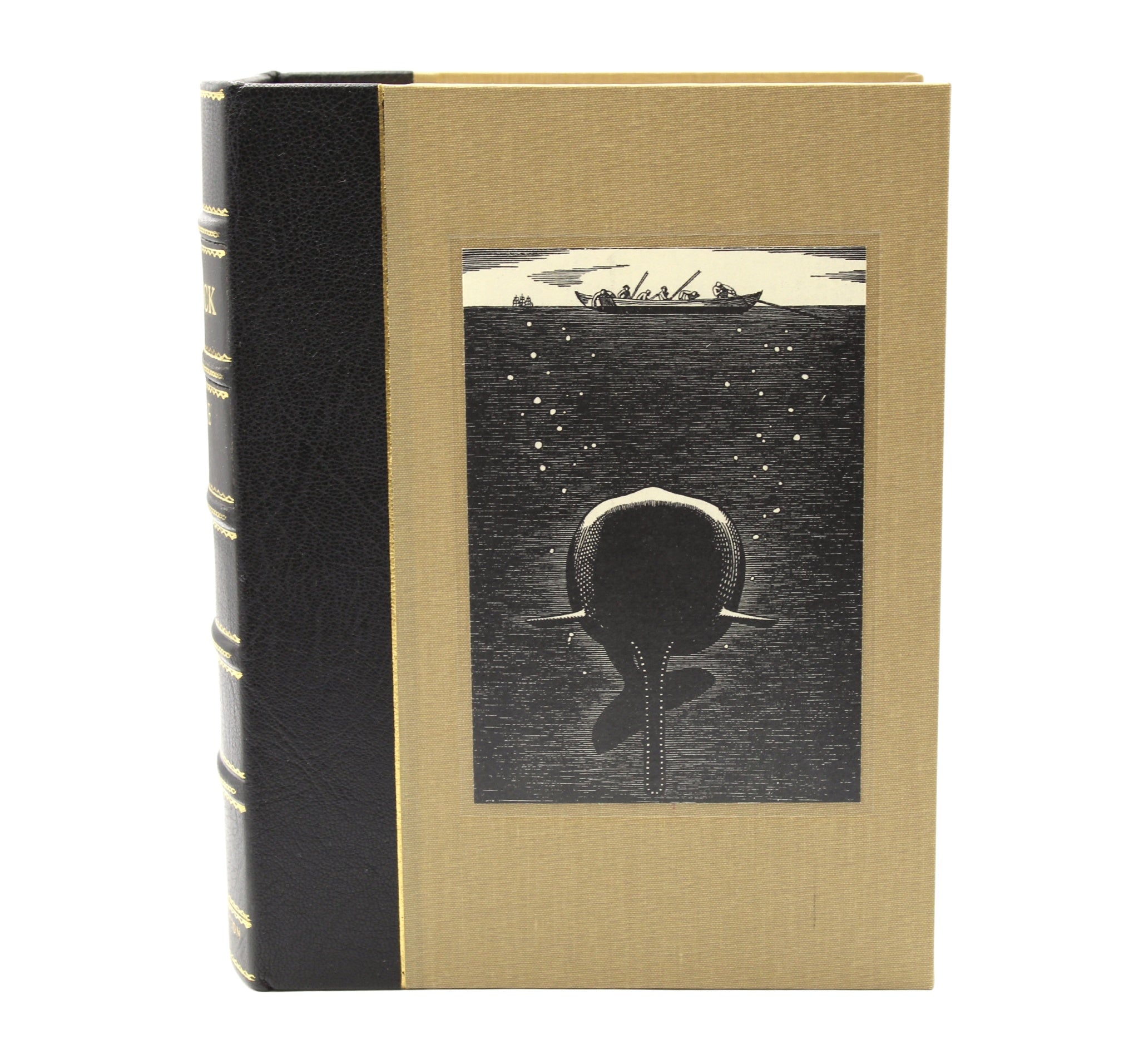

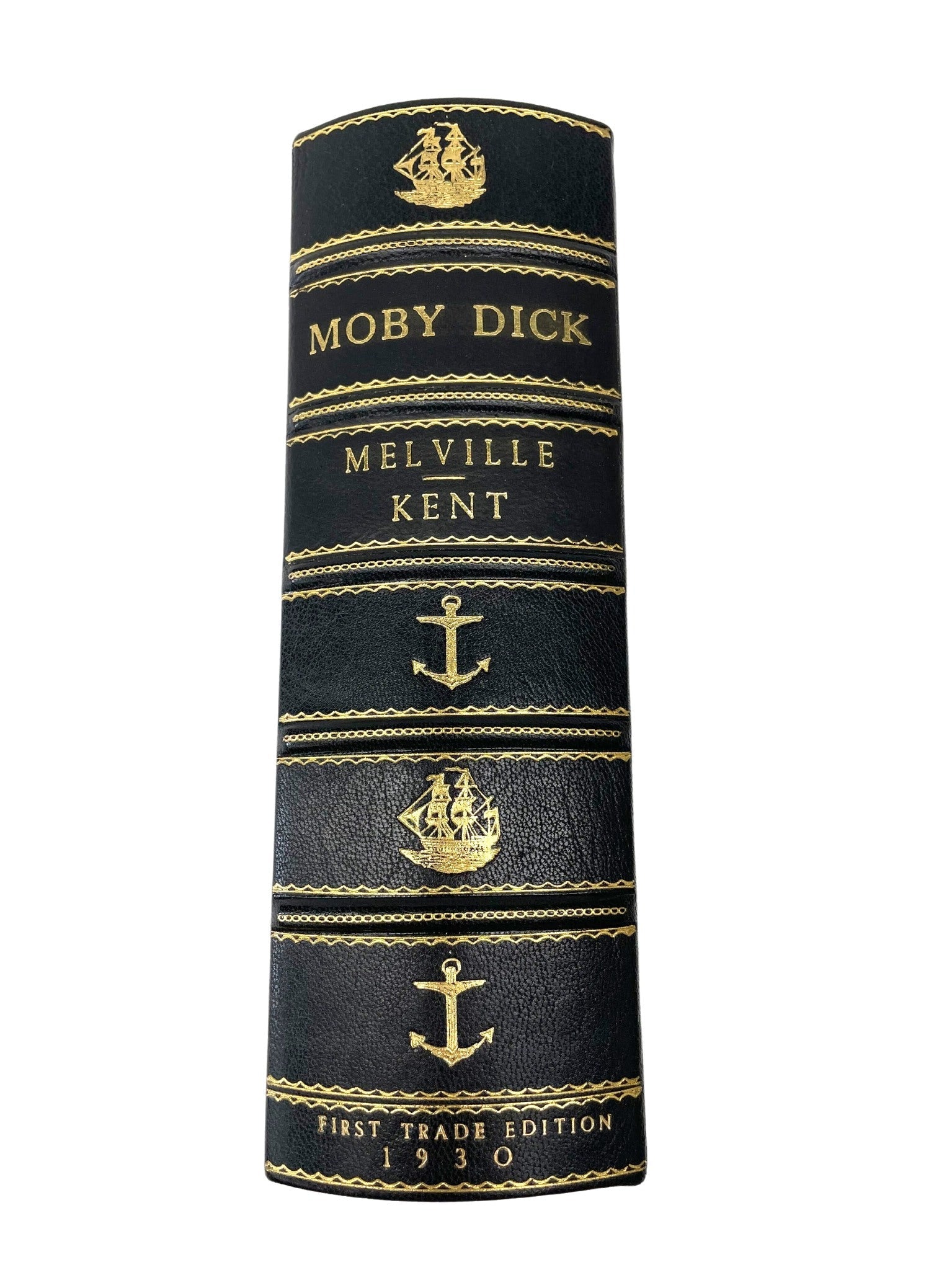
Moby Dick; Or, the Whale, by Herman Melville, Illustrated by Rockwell Kent, First Trade Edition Thus, 1930
Melville, Herman. Moby-Dick. New York: Random House, 1930. Illustrated by Rockwell Kent. First trade edition (thus). Octavo. Original publisher’s pictorial black cloth boards, stamped in silver. Original pictorial dust jacket. Presented with new archival ¼ leather and cloth clamshell case, with raised bands, gilt tooling and titles to spine.
Presented is a first trade edition (thus) of Moby-Dick; Or, the Whale by Herman Melville. First published in 1851, the book was reissued by Lakeside Press in 1930 in a three-volume limited edition, the first to feature Rockwell Kent's beautiful illustrations and limited to only 1000 copies. The limited edition quickly sold out and was followed by an equally popular one-volume trade edition, published later that year by Random House and printed by Lakeside Press. These two illustrated Rockwell Kent editions helped establish Moby-Dick as an American classic. The book featured here is the small format, one-volume first trade edition (thus), filled with Kent’s numerous illustrations. It is presented in the publisher’s original pictorial black cloth boards, stamped in silver, with the original illustrated dust jacket, and a new archival ¼ leather and clamshell case.
Herman Melville began writing Moby-Dick in February of 1850. In preparation for his book, Melville spent a substantial amount of time researching the whaling business on a whole. The historical ship, Essex, that was attacked by a sperm whale in 1820 was a major inspiration for much of Melville’s plot. Even the memorable name of the monstrous whale in the story is derived from a historically aggressive whale off the coast of Chile named Mocha Dick. Melville also drew inspiration from his own time as a sailor in the 1840s.
The book was first published in three volumes as The Whale in London in October 1851, by Richard Bentley. In November of that same year, it was published in New York under its definitive title, Moby-Dick; or, The Whale, in a single-volume edition by Harper and Brothers. Moby-Dick was not a critical or popular success in Melville’s lifetime. Fewer than 4,000 copies were sold and the book was decades out of print by the turn of the twentieth century.
The novel eventually received a positive reception from readers, literary figures, and critics in the 1920s. Most notably, biographer Raymond M. Weaver’s August 1919 article in The Nation, titled “The Centennial of Herman Melville,” and his subsequent full-length biography helped launch the “Melville Revival” of the 1920s. Moby-Dick was also well considered in critic Carl Van Doren’s discussion of “The American Novel” in 1921 and novelist D. H. Lawrence’s “Studies in Classic American Literature” in 1923. With the help of these 1920s literary tastemakers, Melville and Moby-Dick were rescued from historical obscurity and secured their place in the American literary canon.
As Moby-Dick came to be viewed as a great work of American literature, it started to appear in expensive editions geared toward collectors of rare and special books. When Lakeside Press decided to launch their "Four American Books" campaign, they reached out to painter and illustrator Rockwell Kent. Lakeside Press asked Kent to design an illustrated edition of Richard Henry Dana Jr.’s Two Years Before the Mast, but it was Kent himself who suggested Moby-Dick instead. Kent wrote to William A. Kittredge, Lakeside’s then-Director of Design and Typography, that he considered "Moby-Dick….. a most solemn, mystic work," and that the "whole book is a work that should be read slowly, reflectively." He wanted his illustrations to epitomize the mood of the book.
Kent’s first submissions in 1927 delighted the publishers at Lakeside. Kittredge wrote to Kent in response, "Your genius as a thinker, painter, and draughtsman was never more successfully demonstrated." Kent continued to work on the book's illustrations for the next three years, alongside various other activities and expeditions, and finally completed the illustrations in Denmark in 1929. The Lakeside Press three-volume limited edition printing and smaller one-volume trade edition were printed in 1930 with Kent’s illustrations, which are now among the most well-known representations of the novel.
As John Lewis writes, "There is a mystic streak that runs through [Kent's] work, enabling him, if not to match Melville’s magnificent prose, at least to give some pictorial substance to this allegory. Maybe no sperm whale ever reached to the stars……Melville makes one feel it could and Kent has recaptured the mood." (John Lewis, The 20th Century Book, 1984).
CONDITION:
Very good condition. 8vo. Original pictorial black cloth boards, stamped in silver. In the original dust jacket. Previous repairs to closed tear on front panel and front flap fold verso, spine lightly sunned. Interior pages are healthy. Numerous illustrations by Rockwell Kent throughout.
Presented with a new archival ¼ leather and cloth clamshell case, with raised bands, gilt titles, and gilt tooling to the spine, and large decorative whale design stamped to the interior of the clamshell.
Book Dimensions: 7 3/8" H x 5 5/8" W x 2" D. Clamshell Dimensions: 8 5/8" H x 7" W x 2 7/8" D.
Accompanied by the company's letter of authenticity.
Pickup available at Colorado
Usually ready in 4 hours

Moby Dick; Or, the Whale, by Herman Melville, Illustrated by Rockwell Kent, First Trade Edition Thus, 1930
Colorado
1 Lake Avenue
Colorado Springs CO 80906
United States
Choose options
















Frequently Asked Questions
FAQs
Yes, all of our Antiques are certified authentic. Every antique comes with a signed Letter of Authenticity that details the item’s history, its current condition including any conservation, binding, or framing work, and the item’s provenance. The Letters of Authenticity are priced valuations by our authentication specialists, who assure that items are original and unconditionally guaranteed as genuine for life.
We pack and ship your items from our gallery in Colorado Springs. You may also choose to come pick up your order. Antique items are carefully packed and insured during shipping. The shipping price will be calculated at checkout.
We acquire from a variety of trusted sources all over the world, but mostly through auctions and private collections within the United States. All provenance information will be listed on the Letter of
Authenticity accompanying your purchase.

